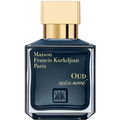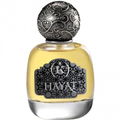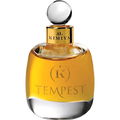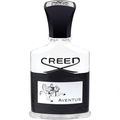One of the very few, select fragrances that I would never voluntarily give up is "Aurum". It has already been written here by Frau Holle: "Aurum" gives you a glimpse of paradise. I do not know whether Mrs. Holle suspected how right she was with her enthusiastic statement - but since we are already here in the realm of fairy tale characters, an almost fairy tale, an in any case legend-like episode from history shall take the evidence:
When the emperor Leo III, born around 680, was about 45 or 50 years old, he experienced in the year 726 or a little later, without any warning, a natural disaster of apocalyptic proportions: the Santorini erupted, causing the sea to shake terribly and enveloping the Aegean Sea in darkness for several days. This traumatic event left him with unanswered questions: "Why is it suddenly so dark?", "What have we angered God with?", and presumably, in medieval fashion, following the principle of 'reflective punishment', illustrated in many subtle shades by Dante as "Contrappasso" in his "Inferno", he concluded that "not being able to see" must necessarily be the consequence of "seeing too much". But what had he seen too much of?
His answer was as simple as it was terrifying: God.
His consequence was frighteningly simple: he had the great icon of Christ removed from a gate of his palace in Constantinople in order to appease God and henceforth be content with the image of the Pantocrator alone.
His idea that a non-orthodox religious practice could be responsible for the unleashed force of nature triggered a period of war and persecution that would go down in posterity's memory as the "Byzantine Image Controversy." It took several councils and over a hundred years of persecution of the weaker side in each case to end once and for all the combative disputes between iconodules (the lovers of the images of God) and iconoclasts (those who denied that any image of the Most High was a sin).
What exactly transpired in those years between 726 and 843 (the year of the decree of restoration of the images issued by Theodora, the reigning widow of Emperor Theophilos) falls, like so much that occurred in those dark centuries, into the realm of imaginations and legends, just as the trigger of the dispute is primarily legend. What remains of this dispute, however, is known to anyone who has ever seen a Byzantine icon or an icon painted in the Byzantine manner: the radiant gold background, which allows no earthly representation, however small, of the ambience surrounding the icon (the "image" of the divine). This radiant gold background, which refracts the light in hundreds of small places through the striking of gold leaf, through the resulting unevenness, and thus virtually shimmers - a principle that has been utilized in the nimbs, which are always sculpturally designed and detach themselves from the background of the picture - this gold background symbolizes the beyond, the paradise that is inexperienced and unimaginable for humans, which only opens up to the earthly wanderer when he crosses the gate into the beyond forever. The shimmering gold symbolizes at the same time also the divine light, the eternal radiance, which embodies and glorifies the majesty of the Pantocrator and which illuminated the darkness of the world.
Gold - the colour of the divine, the colour of paradise. Golden paradise. Aurum. This perfect balance of the individual notes: This is what paradise must smell like.
"Aurum" starts with rose for me, unlike most others. This may be because my copy is already about two years old and the "storm" that actually unfolds in this small, fantastic, heavy in the hand "water glass" has since subsided a bit. The rose, as its lightness demands, has made its way to the surface and, when sprayed in the finest mist from a perfect spray head, the likes of which I now only know from Penhaligon's, unfolds a deep, widely faceted sense of a rose garden in full bloom.
The fine powderiness that floats around the petals soaked in intense essential oil is like the many layers of gold leaf on an icon, or even the many layers of a puff pastry, held apart by the butter evaporating under heat - so many-leafed and multi-layered are the powder and rose petal nuances interwoven. Mixed into this weave from the very first moment is a soft, completely unanimalistic oud note that turns the garden rose into a dark, velvety oriental rose, lending it sweetness and a golden, Byzantine-like shimmer. Perhaps the fragrance is actually called "Aurum" because it repeatedly evokes images of the Orient, Byzantine decorative elements, highly complex gold embroidery on purple velvet, finely chased gold earrings with tiny pearls, golden thrones and golden icons. Worthy of a Theophanu or a Theodora.
Like the many fine gold leaf layers of an icon, the oud rose unfolds among the finest, only gently perceptible fruit tones: sweet oranges, tangy lemons, full-bodied strawberries. None of these fruits takes the lead, at any stage of the fragrance. It's just splashes of fruit that reveal themselves for seconds between rose and oud, making the scent sparkle: If rose and oud signify the image, the mimesis of the divine and at the same time their inaccessibility through complete immobility, the fruit tones in "Aurum" embody the golden background of the image, moving, shimmering, describing paradise. Speaking of "paradise": Chocolate. Heavy dark cocoa sweetness, but used so finely, so delicately, that the heaviness can only be guessed at. It only appears in a later phase of the fragrance, when the rose gradually becomes paler and gives way to a completely soft sweetness. Only then do the finest wisps of vanilla float through the air, never solitary, always interspersed with oud, fruit and cocoa. And because the rose is weaker here, but the fragrance should not lose itself in childish sweetness - anyway, Aurum is never, really never TOO sweet - the labdanum enters here, replacing the flower-pure rose at the end with delicate honey notes in an earthy resinousness.
"Aurum" is a dream scent, a paradisiacal fragrance whose preciousness is reflected in the heavy bottle and in the no less heavy metallic sphere with its fine chasing. "Aurum" is worth its weight in gold, and those who do not know it should urgently try it - to catch a glimpse of paradise.






 Top Notes
Top Notes  Rose
Rose Bergamot
Bergamot Lemon
Lemon Orange
Orange Heart Notes
Heart Notes  Chocolate
Chocolate Strawberry
Strawberry Heliotrope
Heliotrope Patchouli
Patchouli Base Notes
Base Notes  Oud
Oud Vanilla
Vanilla Labdanum
Labdanum







 ALCHABNO78
ALCHABNO78 Hermesh
Hermesh













